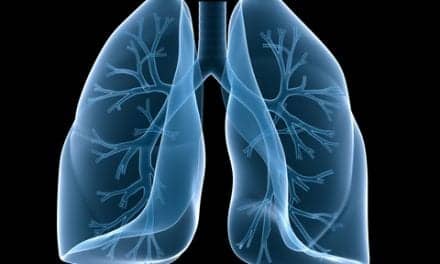The respiratory care department at Santa Rosa is off to a healthy start.
Santa Rosa Hospital, in San Antonio, Tex, first opened its doors to patients nearly 130 years ago. The facility, San Antonio’s first private hospital, went on to create a separate children’s hospital that has served the South Texas pediatric population for approximately 40 years. In contrast, the respiratory care department at Santa Rosa Children’s Hospital just celebrated its first anniversary. “We’re new and we’re growing, and we’re getting there,” says Andy Medina, RRT, director of the children’s respiratory care department.
Medina has worked at Santa Rosa for 8 years, most recently as clinical educator in the pediatric intensive care unit (PICU). When operating at full staff, the children’s respiratory care department has 42 full-time-equivalent (FTE) positions staffed by 70 part-time and full-time associates. Core staff members operate on every floor and in each unit, including the 17-bed PICU and a 35-bed neonatal ICU (NICU).
“About 30 percent of our pediatric population here are pulmonary patients, so we have a lot to do,” Medina says. The facility is a nationally accredited, multidisciplinary cystic fibrosis (CF) center, for example, and a pediatric transport team completes approximately 500 transports each year. The department also has the opportunity to assist in a variety of research programs, some originated at Santa Rosa Children’s Hospital. RCPs in the NICU manage patients receiving nitric oxide, and PICU staff members assist in the care of patients who undergo an experimental technique called titanium rib transplant.
BEGINNING AT GROUND ZERO
Like its patients, the children’s respiratory therapy department at Santa Rosa is very young officially, at least. Following a series of changes during the past several years, department staff and administration have learned much about the importance of respiratory therapy within a larger health care facility. “When I started here, we had a total of about 50 FTEs,” Medina says of the old system, which featured one respiratory services department that covered both adult and pediatric care. Three years ago, the previous administration elected to eliminate respiratory therapy, giving responsibility for respiratory treatment to the nurses and terminating many RCP staff positions.
During that time, Santa Rosa discovered the nursing staff could not provide the same level of respiratory care as the RCPs could. Ultimately, elimination of respiratory care cost the facility more than it would have spent had respiratory therapy remained a hospital department. “A lot of times people don’t realize what they have in respiratory therapy until we’re not around. The fact that they actually were able to experience the amount of work that respiratory therapists do within the hospital, and what we contribute, meant a lot to the new department.”
Once Santa Rosa realized its error, it not only reestablished respiratory care services but decided to create a new system. The children’s respiratory care department was born. With an RRT in charge and newfound support and respect from hospital administration, the children’s department has started the lengthy process of building an individualized program from scratch, defining new time standards specific to pediatrics and developing a pediatric education program.
The advantage of beginning at ground zero? Medina and his children’s respiratory care department staff have the opportunity to create their version of the ideal department. “I actually thought of a program where, if we had the appropriate amount of staff with good education, we could develop specialties in each area of this children’s respiratory therapy department,” Medina explains. “For years the only specialty was respiratory therapy. We know that respiratory therapy is a specialty, but we also know that working in specific units can also be a specialty.”
Before Santa Rosa could undertake the switch to two distinct respiratory care departments, however, it had to convince the RCP staff. Kimberly Scheetz, RRT, joined the respiratory therapy department to work in the PICU just as the facility was considering implementation of a separate pediatric respiratory department. “Actually, I don’t think I was in support of the changes at first. But the more they talked about it, it made sense. You can be a jack of all trades but master of none, and for us to be the very best at what we do, it was a good idea,” she says.
Scheetz, who now accepts both Santa Rosa’s pediatric respiratory department and its new philosophies, notes that most of the concerns expressed by respiratory staff members resulted from fear of the unknown. “Something like this had never happened-I don’t know of any other hospital in San Antonio that has done this,” she says. “People didn’t know what to expect and I think maybe were a little scared, wondering, ‘What if we’re slow and we don’t have any business, are we not going to have a job? Are we going to have to go home?’ ” The implementation process was designed to address such concerns, she says.
Today at Santa Rosa, therapists have a high level of responsibility, a positive benefit won in part following the facility’s experience of operating without any respiratory care department at all. “A lot of times, respiratory therapists don’t perform some of the duties our respiratory therapists here at Santa Rosa do,” Medina points out. Transport therapists, for example, perform all intubations in-transit and sometimes complete difficult ICU-based intubations when the attending resident cannot. “Before I came to Santa Rosa, I never worked in an environment like this,” Scheetz says. “You see the same nurses, you see the same doctors. You get to know the residents, and they know you’re capable and qualified, so they’ll ask you questions, ask your opinion. I’m not saying that doesn’t happen elsewhere, but here it just happens so much and on such a regular basis. It makes you feel like all your education and everything you do is really worth it.”
AN EMPHASIS ON SPECIALIZED CARE
Because the Santa Rosa children’s respiratory care department places so much importance on overall patient care, staff members involve themselves in a variety of specialized programs aimed at bettering the health of certain patient populations. Its CF program, which until recently cared for adult CF patients through the pediatric ICU, frequently participates in national research projects aimed at prolonging and enhancing patients’ quality of life. Currently, it is studying patient epidemiology, the effects of high-dose tobramycin, and the relatively new medication dornase alfa.
One experimental technique the pediatric respiratory care department participates in-titanium rib transplant-was developed 10 years ago by Santa Rosa physician Robert Campbell, MD. Performed on children as young as 1 or 2 years old who suffer from severe spinal curvature, the technique involves replacing an existing rib with a titanium rib that can be expanded as the child ages. “We tend to develop lung tissue up until the age of about 8 years,” Medina explains, so children with spinal curvature also end up with inhibited lung development. “Before, there really wasn’t anything available for these kids…until they were older than that, 10 or 11. By then, when they did do a regular spinal fusion, these patients were actually dying because they didn’t have enough lung volume to survive.”
Following the initial procedure, children return every 4 to 6 months to undergo expansion of the rib implant. RCPs primarily handle ventilator management and weaning from the ventilator. “They’re usually on the vent for 3 days after the initial placement of the titanium rib,” Scheetz says. “But sometimes these kids have lung problems, so we continue the care they would have received at home; we might do bronchodilator therapy or postural drainage.” To date, the titanium rib transplant has been performed in close to 50 patients, Medina says. The experimental program has expanded to multicenter status and is being considered in Pittsburgh and Boston.
The department also works to enhance patient care via its pediatric transport team, which provides ground, fixed-wing (airplane), and rotary-wing (helicopter) transportation services. Although most transports serve the South Texas area, titanium rib transplant patients come from throughout the United States. Staff RCPs with at least 2 years of critical care experience may apply to serve on a transport team, which consists of one RCP and one RN. A transport team therapist might perform two or three transports a week. “The responsibility that they carry as practitioners is much higher than [that of] any other position,” Medina points out. When not en route, transport RCPs maintain competency by performing intubations in the emergency department.
EDUCATION ON DISEASE MANAGEMENT
“Education is the most important part of our program,” Medina says. “We tend to do a lot of education on disease management, not just the actual skills that it takes to perform respiratory therapy.” Santa Rosa’s focus on pediatric disease management allows the department to enhance the clinical education RCPs gain in school. “I don’t think respiratory therapy school dedicates too much time to pediatrics. But there’s a big difference between a 7-year-old asthmatic and a 35-year-old asthmatic, so we try to educate our therapists on that type of disease management.”
Pediatric respiratory care brought a new clinical educator on board to organize the entire educational program. In addition to preparing competency course work, the educator makes herself available to floor and unit staff, according to Scheetz. “We ask her questions all the time,” Scheetz says. The clinical educator also helps to facilitate Santa Rosa’s specialization goals by helping to prepare RCPs who want to work in a specific patient-care unit.
The department organizes 60 hours of educational lectures, all aimed at disease management. Staff physicians conduct many of the lecture series, and because the lectures carry continuing-education credit, department RCPs can fulfill educational requirements at no charge. Education covers every pediatric respiratory specialty. “For example, our therapist education for CF care is intense-it’s 2 days of almost continuous lectures designed to achieve competency in CF patient disease management.”
According to Medina, this focus on disease management, rather than specific skills development, enhances the position of respiratory therapy within the hospital. “When we talk about patient care, there’s more to it than just providing the services,” he says. “With a knowledge of disease management, our therapists are able to interact more with the patient’s care and with the physician.” More knowledge, combined with more involvement in the patient’s care, means that RCPs at Santa Rosa have the ability to suggest care alternatives that optimize the patient’s progress.
Scheetz points out that recent events at Santa Rosa afforded less traditional learning opportunities. “I discovered that we shouldn’t be so reluctant to change,” she says. “What has happened at Santa Rosa really has been a great thing, not just for the people who work here but also for our patients.”
Kathryn Olson is a contributing writer for RT.









